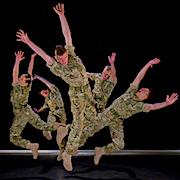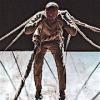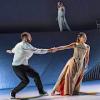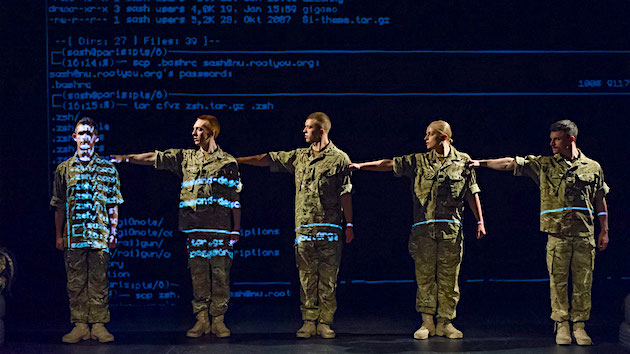
A dancer executing an arabesque is at war: Balanced on one foot, the non-supporting leg cranks up behind the torso like a backwards-aimed rifle—to 90 degrees, if not higher. The spine, pelvis, and head assume inorganic relationships. A stylized anatomical “line” is achieved from which stories of freedom, bondage, ferocity, or joy might be expressed.
Similarly, a soldier engaged in warfare, the kind involving actual bodies, not unmanned, remote-controlled drones, uses his or her body in unique, self-protective or lethal ways. Aimed at preserving (own) while eliminating (other) life and performed in tandem with weaponry, war choreography follows patterned lines and predetermined protocols.
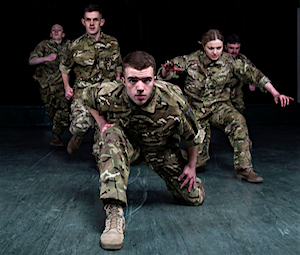
These and other parallels and contrasts between the lives of dancers and soldiers caught the attention of choreographer Rosie Kay, whose company, founded in 2004, is based in Birmingham, West Midlands, England. Bringing the Rosie Kay Dance Company to San Francisco’s Atrium Theater in the War Memorial, April 11–13, S.F. Performances presents Kay’s 5 SOLDIERS – The Body Is the Frontline (2010–2017). The evening-length work is part of a trilogy that delves into issues relating to art, gender, religion, politics, psychology, pop stars, and more. On the most elemental scale, it is a dance about bodies trained to kill or be killed and dancers trained under intense circumstances that while not risking death, nonetheless involve danger, chaos, stress, and injury.
The jobs of dancers and soldiers, Kay writes in response to an email, depend on maintaining a healthy, “working body.” Not only the body, but identity, indeed the soul, is at peril each time a soldier or dancer ventures onto a battlefield or stage. While creating 5 Soldiers, Kay realized soldiers, like dancers, are not automatons. Although both are highly disciplined and accustomed to following orders, dancers must believe in the vision of an artistic director or choreographer, and soldiers follow only leaders in whose mission they trust.
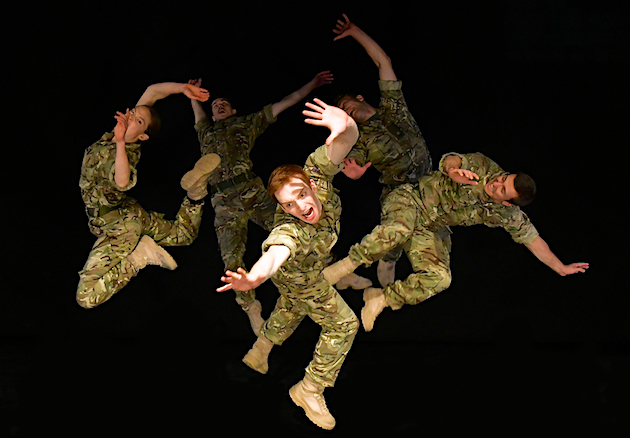
Kay’s expanded awareness about war involved embedding herself in 2008 with a battalion. “When I did my attachment to 4th Battalion The Rifles, apart from the obvious stuff of observing and participating in battle exercises, I talked to the junior officers and soldiers about what made a good team, what made it harmonious, how did they cope if it wasn’t working well together, and how to build trust and bonding within short term small teams,” says Kay in an interview. “I began to see that it was all about the mission. As an artist, I felt I did have a very strong mission, but I didn’t always express it to others. I was quite shy of my innermost thoughts and fears, and through the army training, I found that I made good decisions and I could inspire, if I was honest with myself and my team. They don’t do any kind of leadership or management training at dance school, yet it’s key to our jobs. I’ve found since then, and probably [with] having a young child, I’ve become more direct, much clearer about what I want, and I now ask how to get it. I get less stressed about achieving perfection, because I share that weight with my team.”
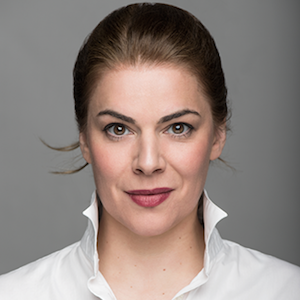
When the five dancers (one female, four males) appear costumed in U.K. army fatigues and berets, 5 Soldiers has them in a holding area, a purgatory of anxiety magnified by the “hurry up and wait” environment. Part one’s complex, dehumanizing drills prepare them for killing. A second section provides physical and drinking games, love duets, solitary struggles with inner demons and ends with bullets signaling impending war. Dropped into enemy terrain in part three, a firefight and improvised explosive device attack leave a single soldier spinning. The work finishes in a rehabilitation center, where soldiers prepare to return to battle or battle to find new identity in civilian life. The soundscape includes composer Annie Mahtani’s recordings of tanks, drones, and helicopters. Tracks by The Clash, Katy Perry (“Firework”), and three movements of the Stabat Mater by Pergolesi, along with video projections of digital read-outs and footage from the war in Afghanistan contribute evocative sensory texture.
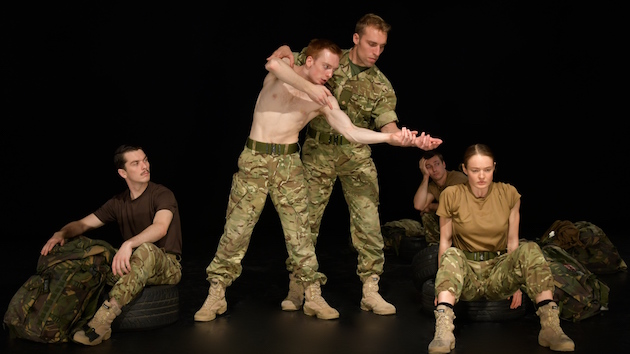
Kay says that touring the work in different countries has revealed universal, underlying themes. “We talk about armies, of the politics, the technologies, but we are talking about state sanctioned intervention of violent force to impose political aims, enacted through the maiming, injuring and killing of other bodies. These bodies may be enemy soldiers or civilians, but the body is still the place of war, literally the frontline.”
Bringing the work to the United States for the first time, she says, “We [in the U.K.] have a shared recent past in Afghanistan and Iraq, but I do think soldiers fought slightly different wars, with different levels of equipment, support on the ground, and most importantly, attitudes back home. I can’t wait for those post-show talks to find out what people think.”

